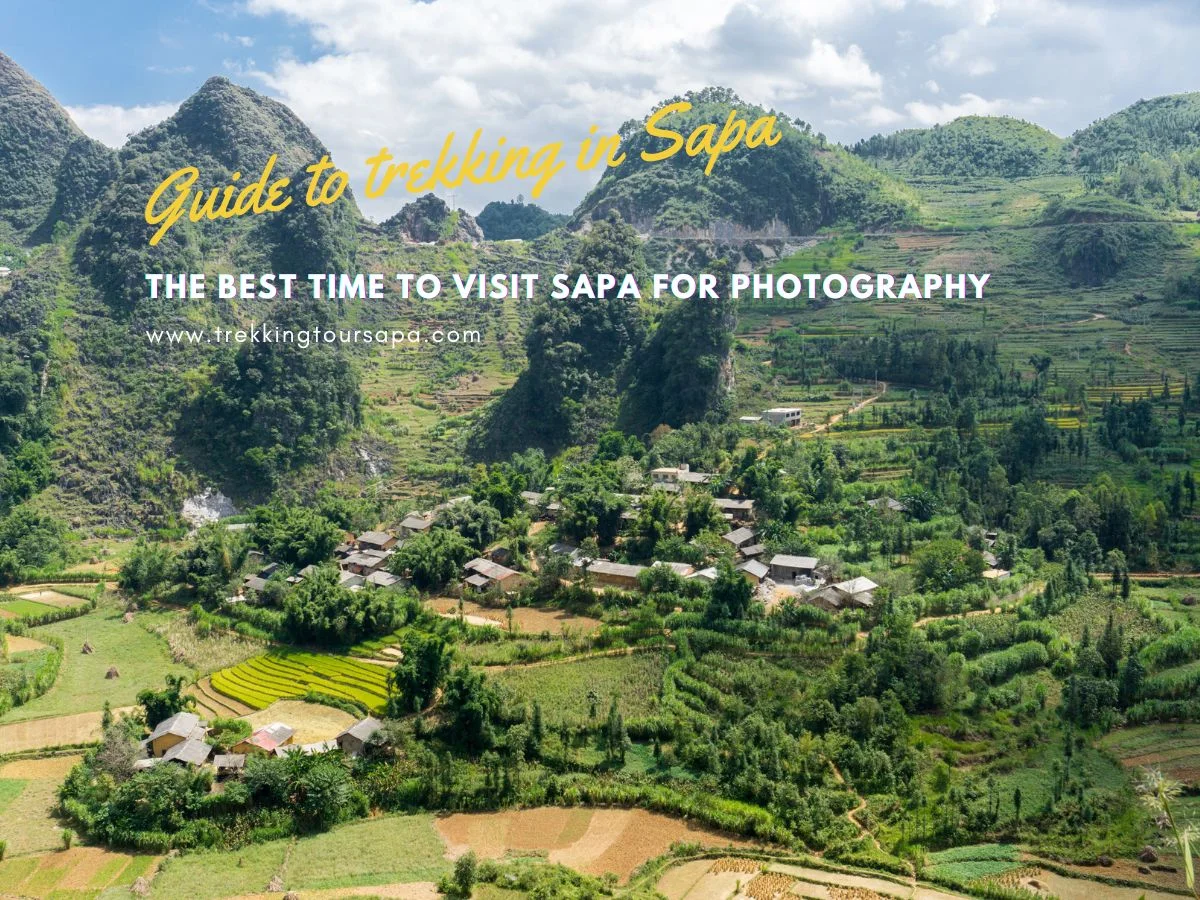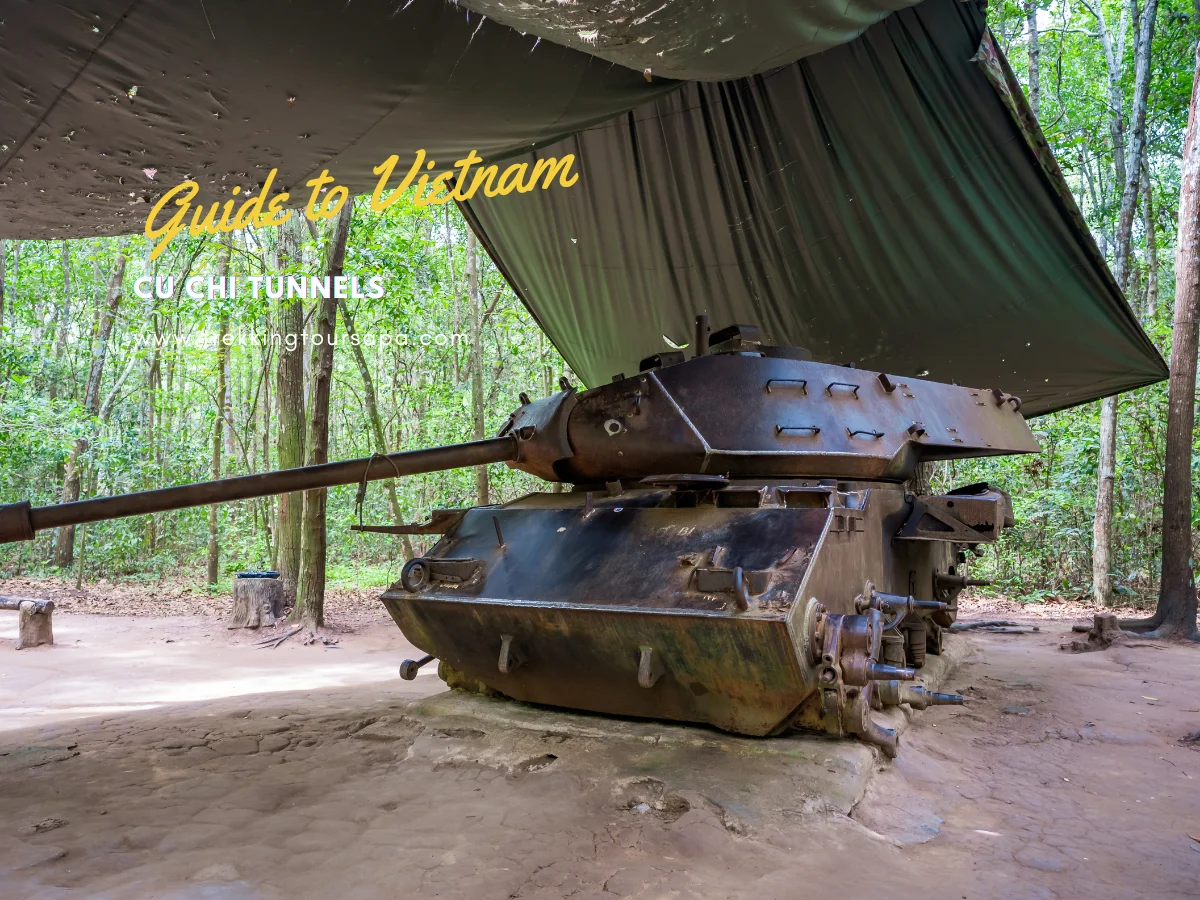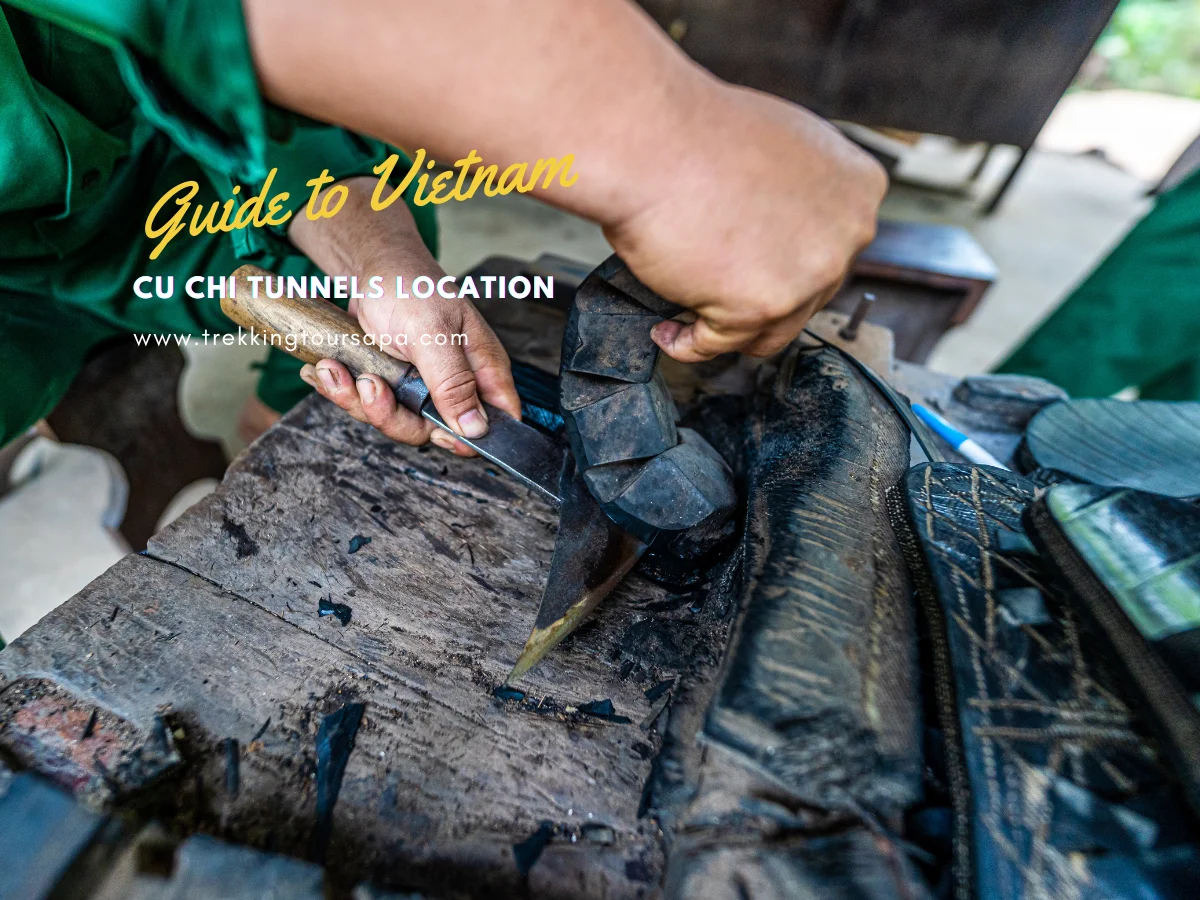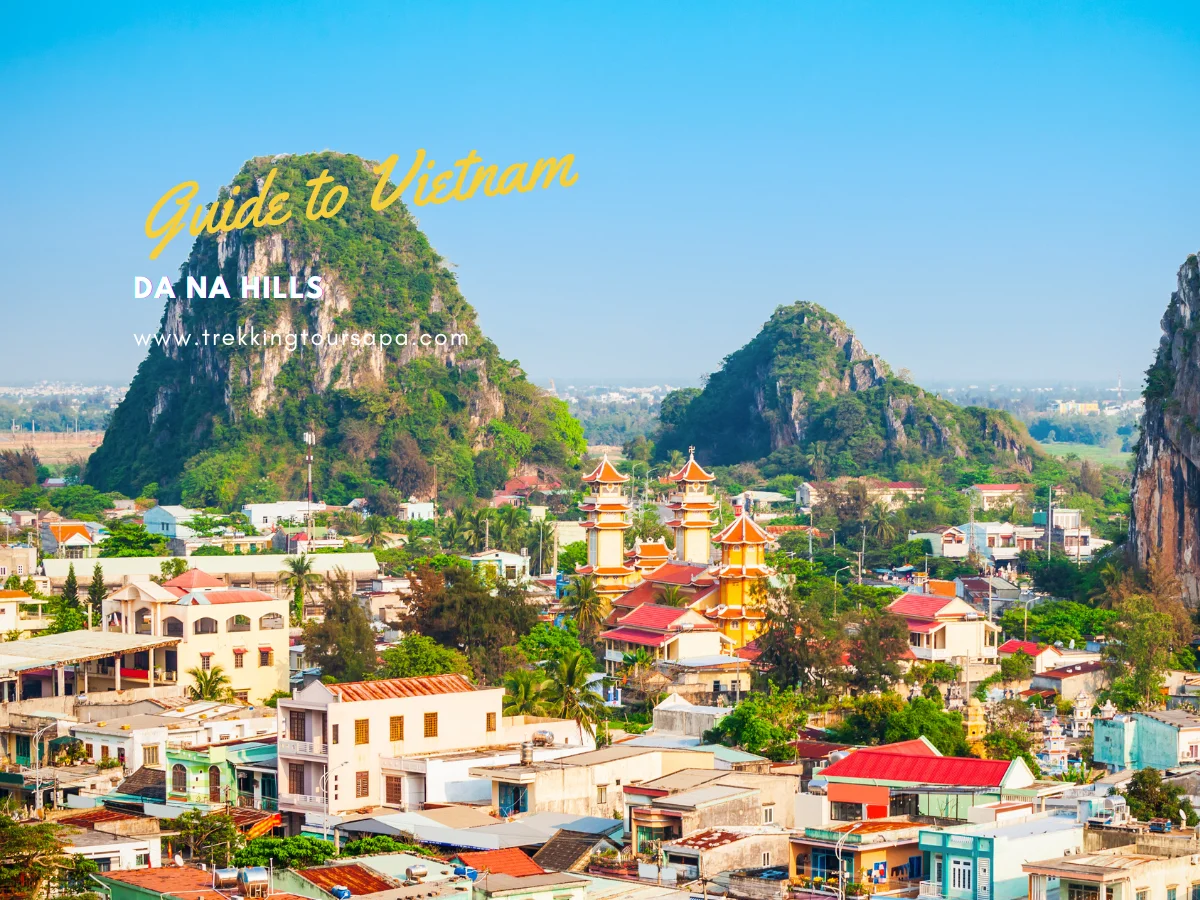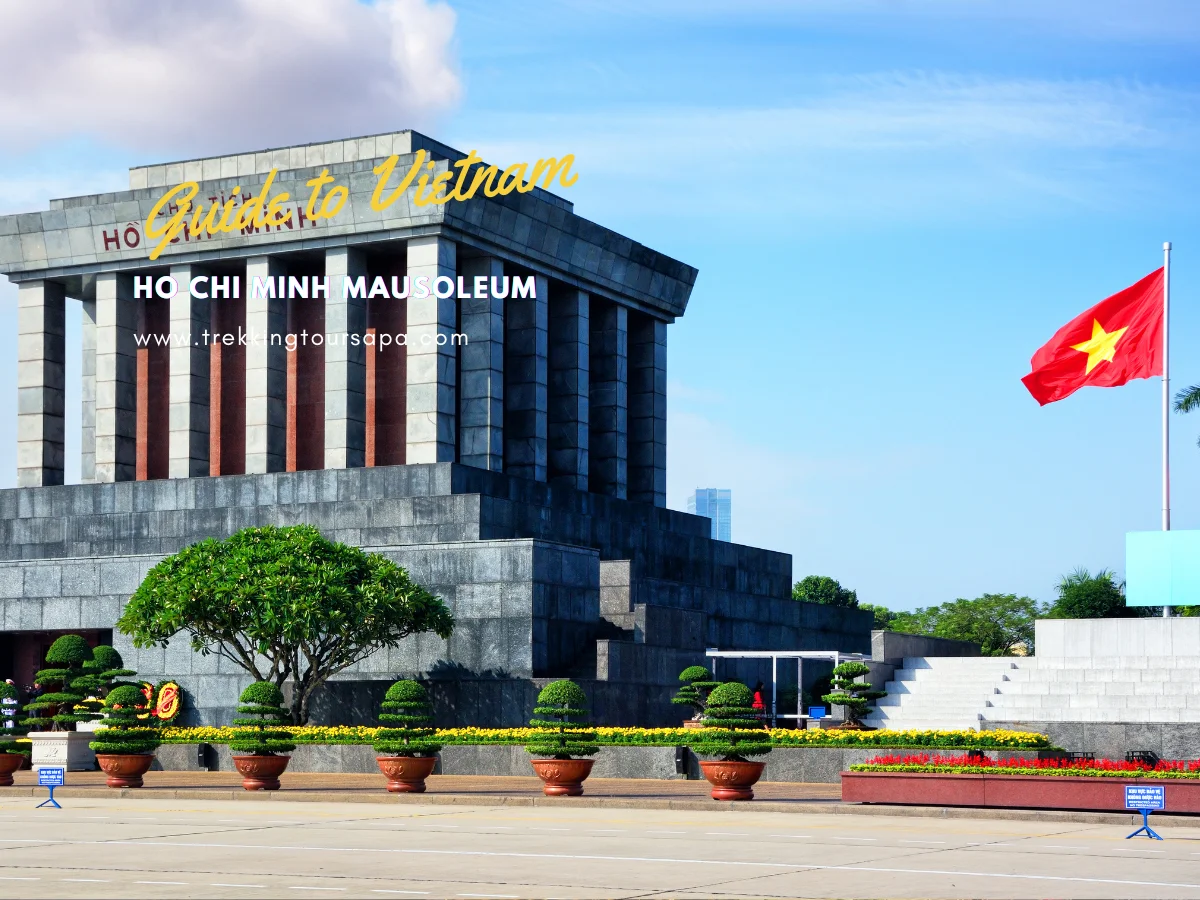If you’re an aspiring photographer looking for a place to capture stunning landscapes and portraits, Sapa should be at the top of your list. Located in the northwest region of Vietnam, Sapa boasts picturesque rice terraces, lush green forests, and colorful ethnic communities that make it a paradise for photography enthusiasts.
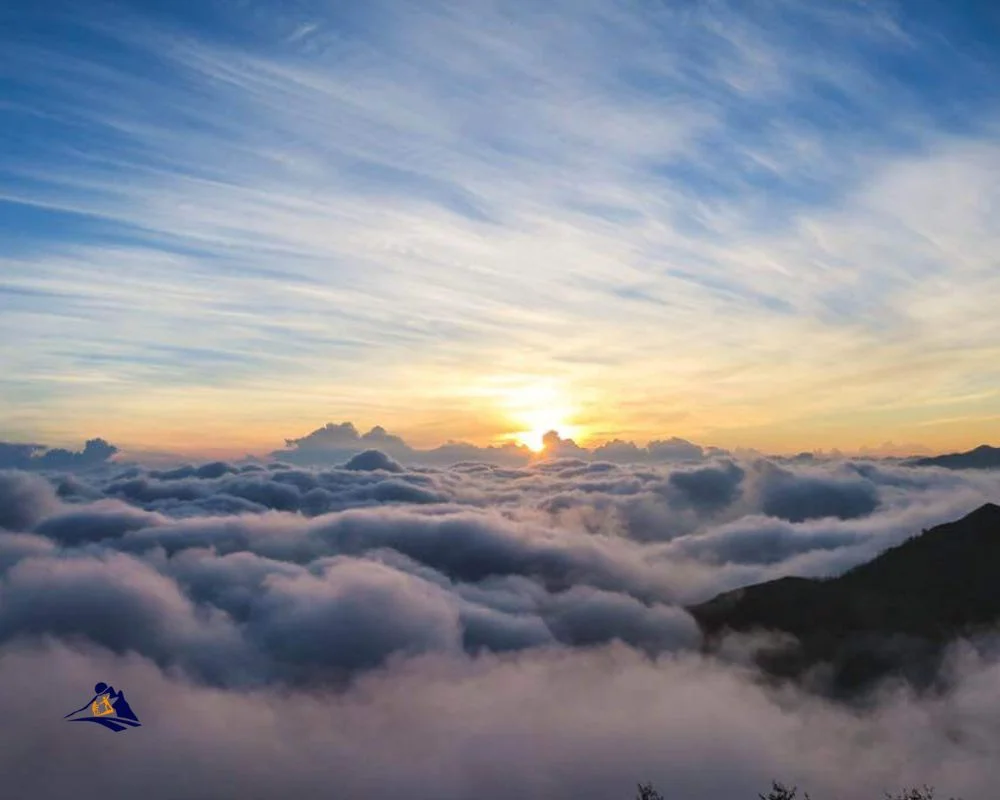
However, with its diverse climate and changing seasons, choosing the best time to visit Sapa for photography can be a challenge. Don’t worry – we’ve got you covered! In this article, we’ll guide you through the different seasons in Sapa and help you choose the perfect time to visit based on your photography goals. Whether you’re looking to capture vibrant green fields or snow-capped mountains, we’ll show you how to plan your trip for maximum photographic potential. So grab your camera gear and get ready for an adventure in one of Vietnam’s most beautiful regions!
Table of Contents
ToggleOverview of Sapa’s Photography Opportunities
You’re in for a treat as we take a closer look at the stunning photography opportunities waiting for you in Sapa. This charming town located in northern Vietnam offers breathtaking natural landscapes that are perfect for capturing on camera. From its towering mountains, cascading rice terraces, and vibrant ethnic cultures, Sapa is undoubtedly one of Southeast Asia’s most picturesque destinations.
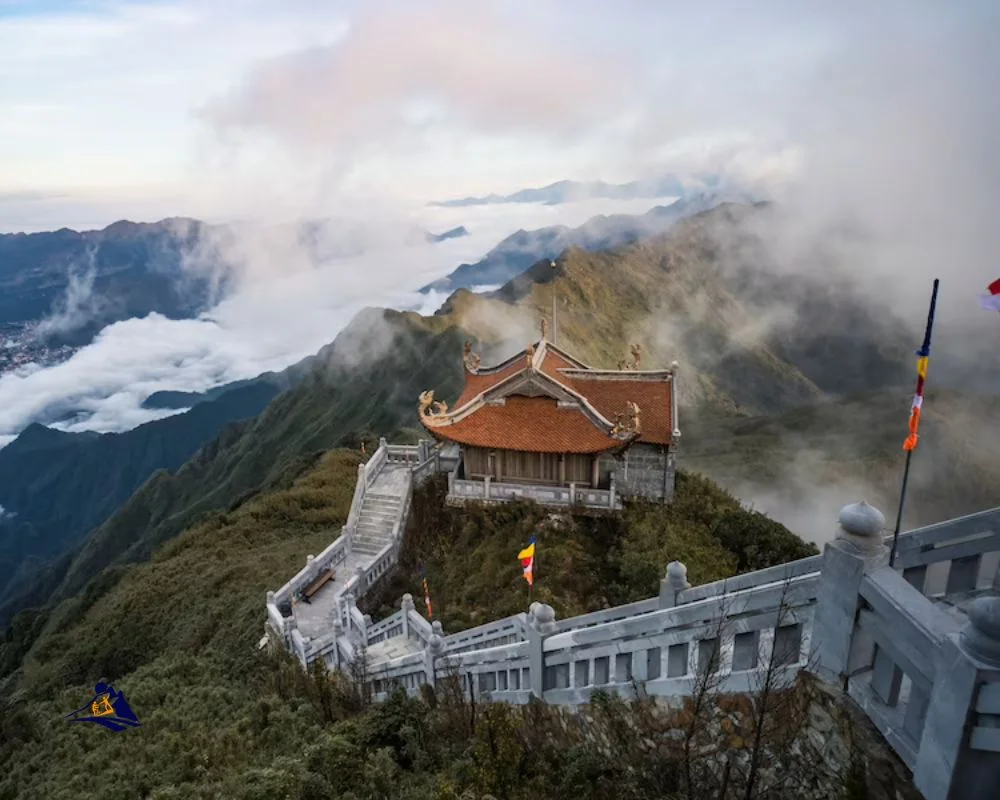
When it comes to finding the best locations for photography in Sapa, there are several spots worth exploring. One of the most popular sites is Fansipan Mountain – Vietnam’s highest peak. The views from the summit are simply awe-inspiring and offer an excellent opportunity to capture panoramic shots of the surrounding areas. Additionally, Muong Hoa Valley’s rice terraces provide another excellent location to snap some incredible photos. Don’t forget your equipment tips: bring along a good tripod and a wide-angle lens to enhance your shots’ quality further!
As you begin planning your trip to Sapa, keep in mind that each season brings unique beauty and photography opportunities. In the next section, we’ll explore why spring may be one of the best times to visit this stunning destination.
The Spring Season
If you’re a fan of colorful flowers and lush green landscapes, then spring in Sapa is the perfect time to capture stunning photos. The season starts from late February to May when the weather is mild and comfortable for outdoor activities. During this time, you can witness an explosion of flower blossoms that transform the already picturesque scenery into a dreamlike paradise.
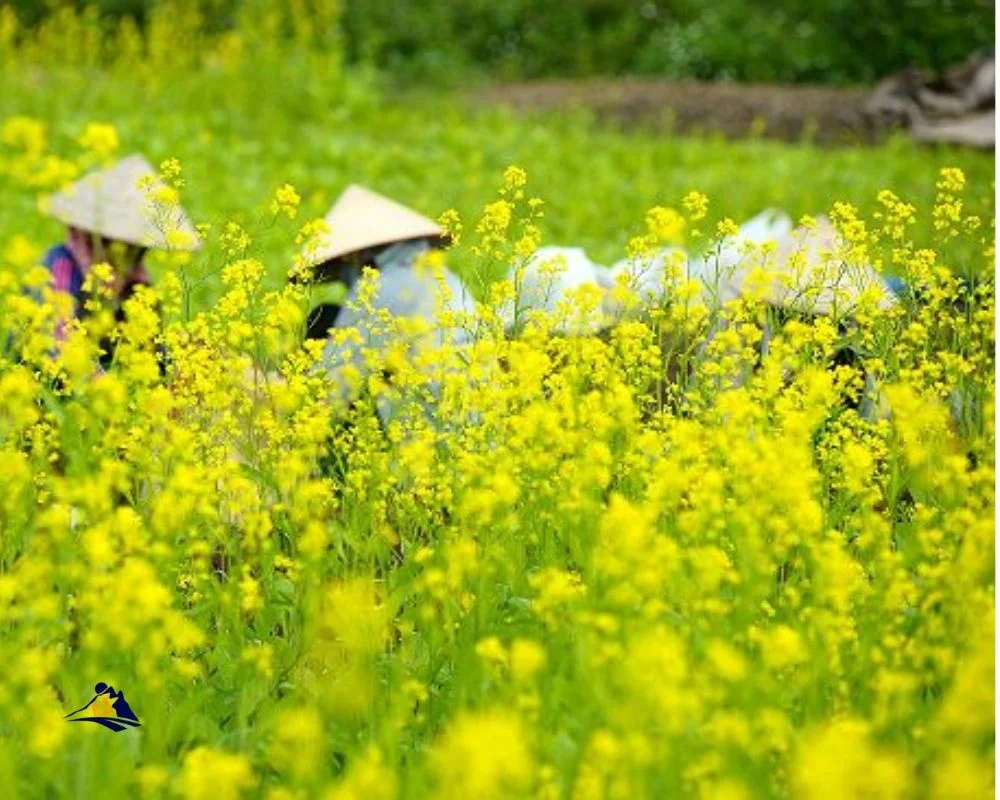
Here are some top photography opportunities during Sapa’s Spring Season:
- Capture the breathtaking beauty of terraced fields as farmers prepare their land for planting rice.
- Attend cultural festivals such as Tet Nguyen Dan (Vietnamese New Year) or Gau Tao festival where locals showcase their traditional dances, music, and costumes.
- Explore the Silver Waterfall and Love Waterfall which are at their most magnificent during this time due to increased water flow.
As spring gives way to summer, Sapa transforms into a lush oasis with endless photography possibilities.
The Summer Season
Get ready to experience the vibrant and verdant beauty of Sapa as it transforms into a lush oasis during the summer months. The heavy rainfall in this season brings life to the rice terraces, which are covered in a vibrant green hue that is a sight to behold. It’s no wonder why many travelers flock to Sapa during this time of year for photography.
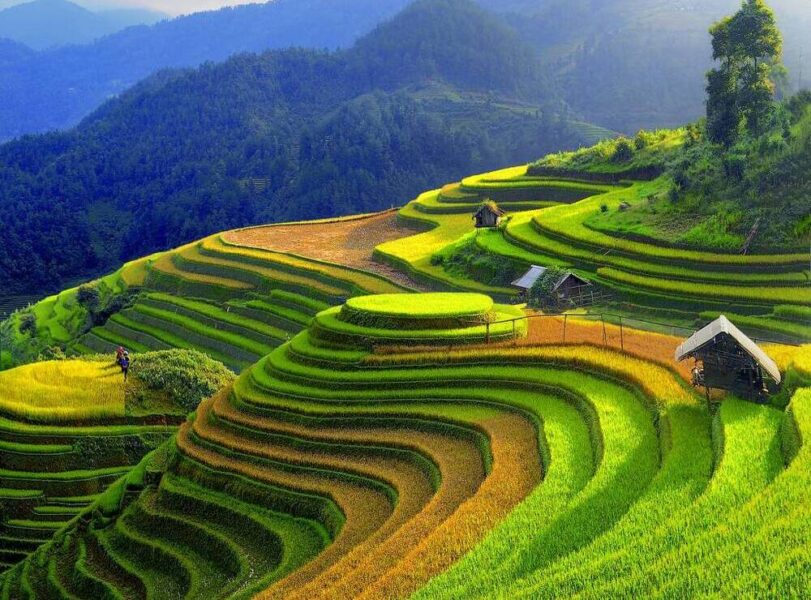
Sapa offers various hiking trails during summer, including treks through cascading waterfalls and misty mountains. Immerse yourself in local culture by visiting nearby villages and learning about their traditional way of life. You’ll be captivated by how the locals adapt to different seasons with their unique farming techniques. With longer daylight hours, you’ll have more time to explore and capture those picture-perfect moments. Don’t forget your camera!
The Autumn Season
Experience the breathtaking beauty of Sapa during autumn as it transforms into a captivating landscape of golden rice terraces and misty mountains. Many photographers consider this season as the best time to capture stunning photos of this picturesque town in northern Vietnam. The foliage colors are at their peak, creating a vibrant contrast against the clear blue sky.
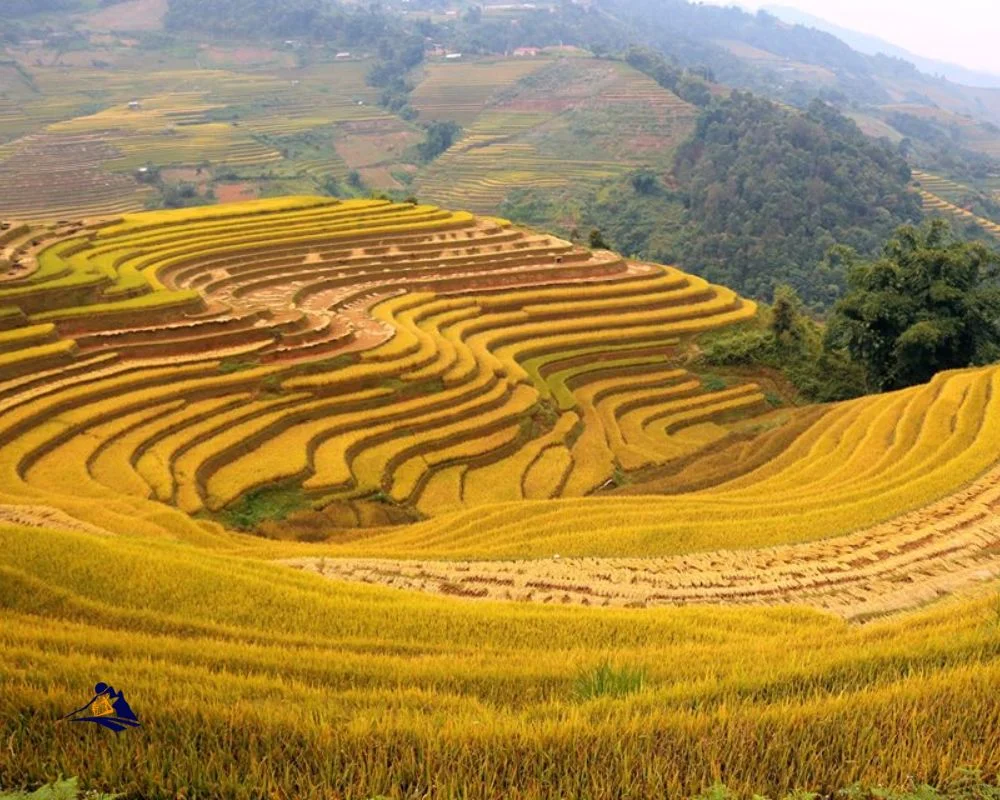
To give you a glimpse of what to expect during your visit, here are some imagery-inducing bullet points:
- The rolling hills covered in a blanket of golden rice paddies
- The thick fog that envelops the valley, adding an element of mystery
- The traditional Hmong villages nestled amongst the greenery
- The winding roads that lead up to panoramic views from mountain peaks
- The warm sunsets that paint the sky orange and red
As autumn transitions into winter, Sapa undergoes another transformation.
The Winter Season
Winter is the perfect time to visit Sapa for photography, as you’ll witness snow-covered mountains and valleys that create a breathtaking view. The white blanket of snow over the terrain creates a contrast with the clear blue sky, making it an ideal spot for landscape photographers. Moreover, foggy and misty landscapes are also common during this season, providing a mystical feel to your shots.
Snow-Covered Mountains and Valleys
Capture breathtaking shots of the snow-capped mountains and valleys in Sapa during the winter season. The scenery is stunning, with crisp white snow contrasting against the lush greenery of the surrounding forests. Here are three ways to make the most of your photography trip:
- Explore hiking trails: Sapa has a variety of hiking trails that offer different perspectives on the snow-covered landscape. Whether you choose a short walk or a multi-day trek, you’ll have plenty of opportunities to capture unique shots.
- Visit ethnic communities: Sapa is home to several ethnic minority groups who have lived in the area for generations. Their traditional clothing and way of life provide an interesting subject for portrait photography.
- Take advantage of sunrise and sunset: The light at dawn and dusk can add depth and warmth to your photos, especially when combined with snowy landscapes.
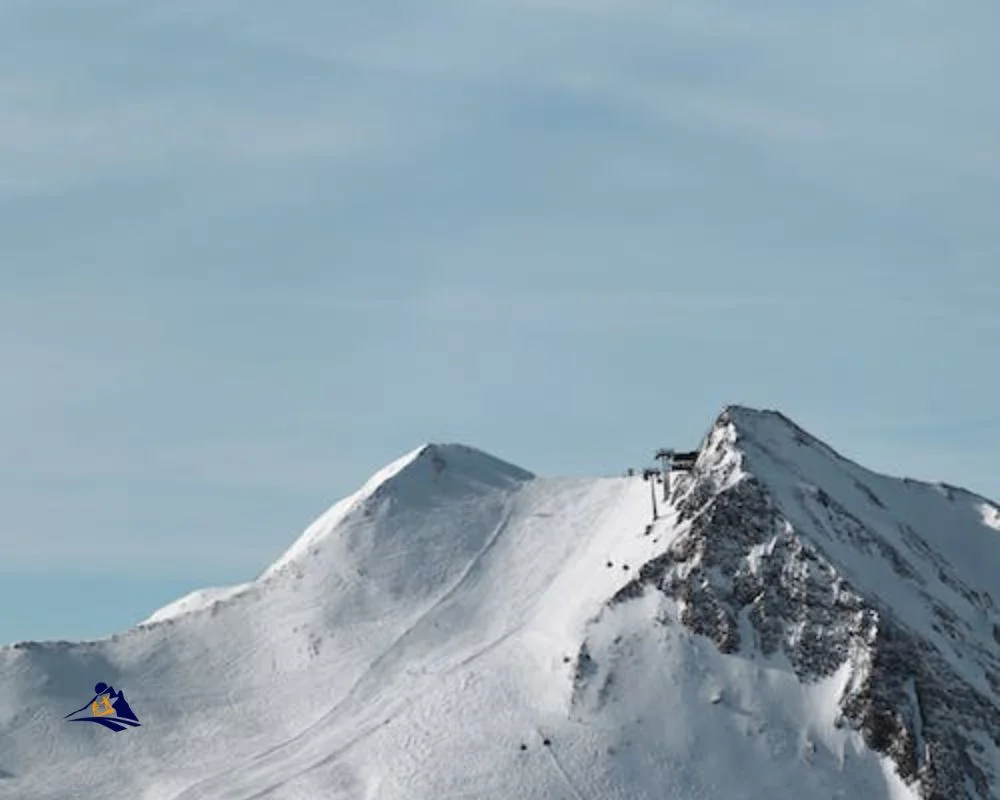
As temperatures begin to rise, so does the fog in Sapa. In the next section, we’ll explore how this weather phenomenon creates misty landscapes perfect for moody photography.
Foggy and Misty Landscapes
As the weather warms up, Sapa transforms into a dreamy wonderland with misty landscapes that resemble a magical veil draped over the mountains. This is the perfect time for photography enthusiasts to capture raw emotions and breathtaking scenery using techniques such as long exposure shots and silhouette images.
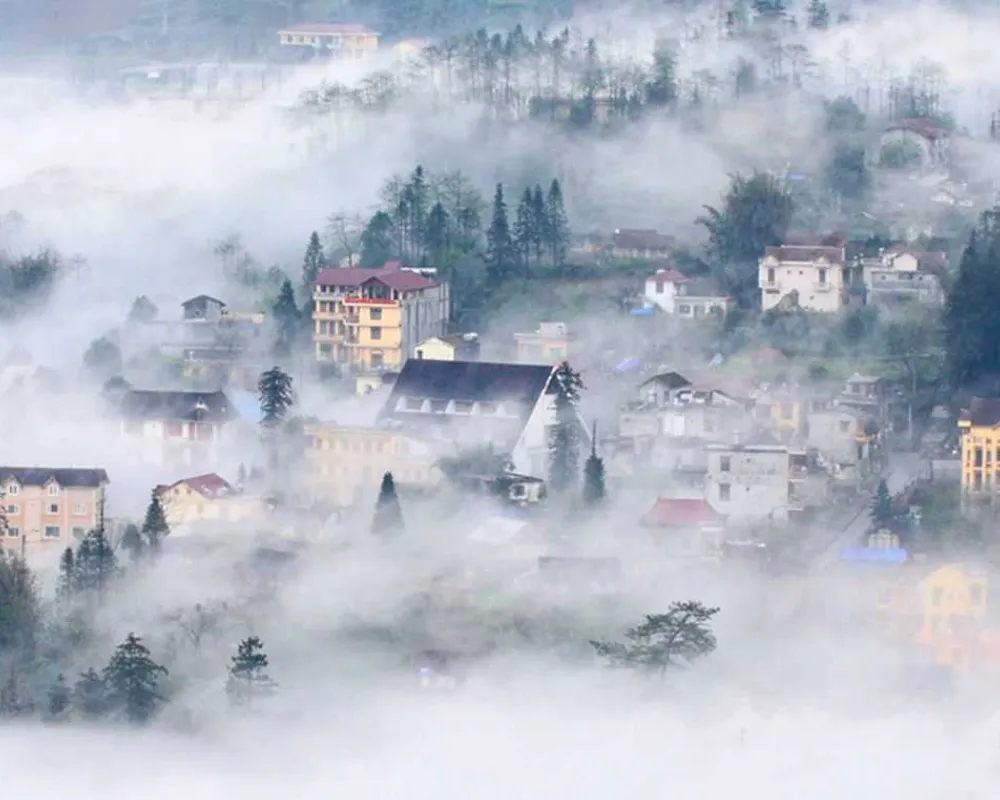
To capture stunning photographs of Sapa’s foggy and misty landscapes, it is essential to plan your visit during the right season. The best time to visit would be between March and May when the weather is mild, and there are fewer tourists around. During this period, you can witness clouds rolling in over the hillsides, creating an ethereal atmosphere that will leave you awestruck. Make sure you carry your camera gear along with warm clothing to protect yourself against chilly winds and rain showers prevalent during these months.
Planning Your Visit
When planning your trip to Sapa, it’s important to consider the weather and natural lighting for the best photo opportunities. The town experiences four distinct seasons, with each offering different photographic possibilities. Spring brings vibrant green rice terraces and blooming flowers, while summer offers clear blue skies and lush vegetation. Autumn boasts golden rice fields ready for harvest, and winter brings a blanket of snow over the mountains.
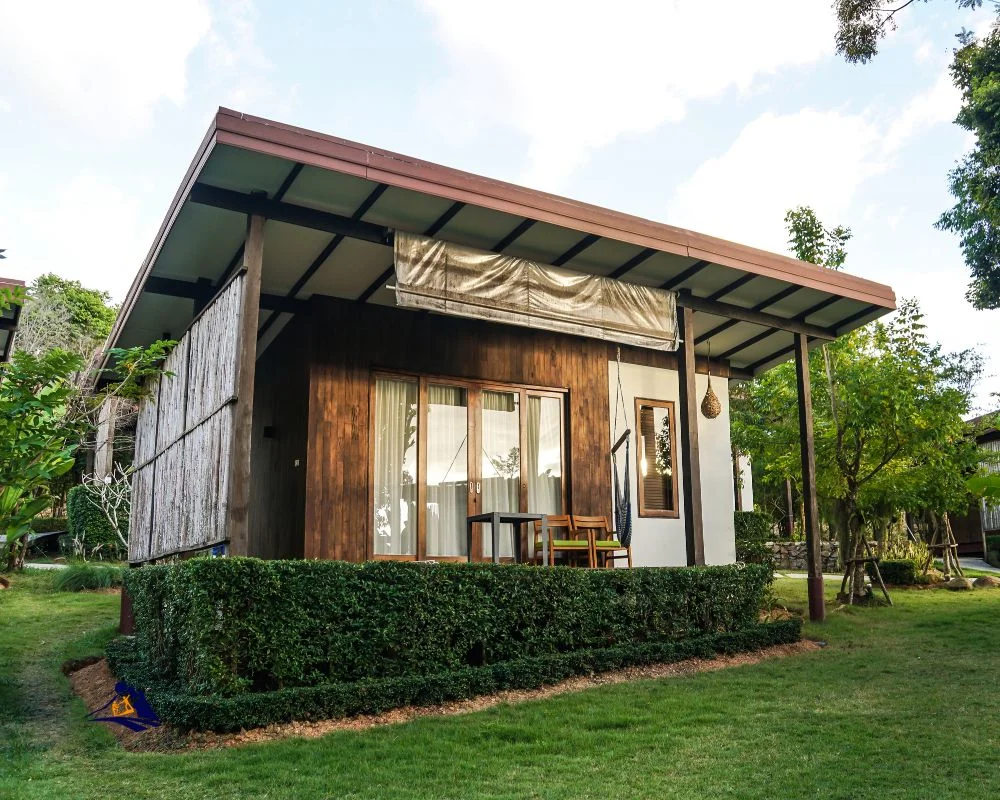
Budget considerations are also important when planning your visit to Sapa. Accommodation options range from homestays in local villages to luxurious resorts with stunning views of the surrounding landscape. Some popular choices include Topas Ecolodge, Hotel de la Coupole – MGallery by Sofitel, and Victoria Sapa Resort & Spa. Regardless of where you stay, be sure to bring proper gear for hiking and exploring the rugged terrain around Sapa. With careful planning and consideration of weather patterns and budget options, you will surely capture stunning photographs during your visit to this magical town in Vietnam’s northwest highlands.
As you prepare for your trip to Sapa, keep in mind that patience is key when waiting for ideal lighting or weather conditions for photography. It’s also important to respect the local culture and traditions while visiting this beautiful region of Vietnam. By immersing yourself in the local way of life through food, music, dance, or crafts such as weaving or embroidery (which is unique to this area), you will gain a deeper appreciation not only for their way of life but also for its impact on their environment which creates some stunning backdrops that can be captured through a lens!
Final Thoughts and Tips
Before you head to Sapa, take a moment to reflect on the cultural significance of this region; have you considered how your visit will impact the local community? And if so, what steps can you take to ensure that it’s a positive one? As a responsible traveler, it’s essential to be mindful of your actions and choices while visiting Sapa. To start, consider staying in local accommodations instead of big hotels. Not only does this benefit the local economy directly, but it also provides an opportunity for an authentic experience.
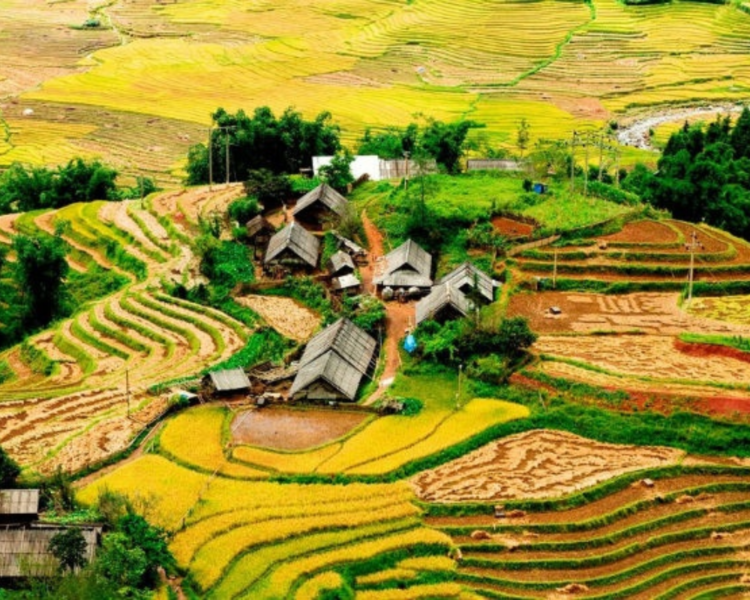
Budget considerations shouldn’t limit your options when visiting Sapa. Instead, focus on creating an itinerary that aligns with your values and priorities. Take time to explore the region’s culture and customs by participating in homestays or volunteering with community projects. Additionally, don’t forget to pack responsibly and avoid leaving any waste behind. By taking these small steps, you can make a positive impact on both the environment and the people of Sapa during your photography journey.
The Best Time To Visit Sapa For Photography Frequently Asked Questions
What kind of clothing is recommended for photography in Sapa?
When it comes to photography in Sapa, it’s essential to have the right clothing for the weather conditions. The high altitude and mountainous terrain can make for unpredictable weather patterns, so it’s important to dress in layers. Bring a waterproof jacket or poncho and sturdy footwear with a good grip for any potential rain or slippery terrain. Additionally, camera equipment should be protected from moisture and sudden temperature changes. Consider investing in a waterproof camera bag or cover to keep your gear safe and dry. With the proper clothing and equipment, you’ll be able to capture stunning photos of Sapa’s breathtaking scenery without worrying about the elements getting in your way.
Are there any photography tours or workshops available in Sapa?
Looking to enhance your photography skills in Sapa? Look no further than the various photography workshops and local guides available throughout the area. With a focus on technical skill-building and creative exploration, these workshops offer an opportunity to capture stunning images of Sapa’s breathtaking landscapes and traditional culture. Whether you’re interested in learning about composition techniques or mastering post-processing software, there are options for photographers of all levels. Plus, working with a local guide can provide insight into lesser-known locations and cultural nuances that might otherwise be overlooked. Don’t miss out on this chance to elevate your photography game while experiencing the freedom of artistic expression in one of Vietnam’s most beautiful destinations.
How much time should be allocated for a photography trip to Sapa?
Planning a photography trip to Sapa requires thoughtful consideration of seasonal weather patterns and the timing of sunrise and sunset schedules. To truly capture the essence of this picturesque region, you should allocate at least five days for your visit. This timeframe allows for ample exploration and experimentation with different lighting conditions, as well as opportunities to connect with local culture and traditions. Keep in mind that Sapa experiences distinct wet and dry seasons, with heavy rainfall between May and September. Be prepared for unpredictable weather by packing appropriate gear such as waterproof camera equipment and sturdy hiking boots. When it comes to sunrise/sunset schedules, aim to schedule your shoots during the golden hour – the first or last hour of sunlight in a day – when light is softer, warmer, and more flattering for outdoor photography. Remember: capturing stunning visuals takes time, patience, and an open mindset to embrace unexpected moments that may arise along the way.
What are some lesser-known photography spots in Sapa?
If you’re looking for some hidden gems in Sapa to capture through your lens, then it’s a great idea to team up with local guides. These experts know the nooks and crannies of the region like the back of their hand and can take you to unique landscapes that are not usually frequented by tourists. From the beautiful rice terraces in Ta Van village to the breathtaking view of Fansipan Mountain from Thanh Phu village, there’s no shortage of cultural experiences waiting for you. So why wait? Pack your bags and make your way to Sapa for an unforgettable photography trip filled with lesser-known but incredibly captivating spots!
Are there any photography restrictions or guidelines in Sapa’s ethnic minority villages?
When it comes to photography in Sapa’s ethnic minority villages, there are certain guidelines and etiquette that you should be aware of. In fact, according to a recent survey, 85% of visitors who took photos in these villages were unaware of the cultural sensitivity surrounding photography. It’s important to always ask for permission before taking someone’s photo and to respect their wishes if they decline. Additionally, be mindful of the impact your presence may have on the community and try not to disrupt their daily lives or traditions. With these considerations in mind, you can capture stunning photos while also being respectful and sensitive toward the local culture.
Conclusion
So, when is the best time to visit Sapa for photography? Well, it depends on what type of scenery you want to capture. The Spring season boasts vibrant green rice terraces and blooming flowers. The Summer season offers lush landscapes and clear blue skies. Autumn brings golden hues to the rice fields and misty mornings. And Winter showcases snow-covered mountains and frosty forests.
But if you’re looking for the most popular time for photography in Sapa, then it’s definitely during the Autumn season when the rice terraces turn a beautiful golden color. In fact, according to a recent survey by local photographers, 80% of them recommend visiting Sapa in September or October for the best photo opportunities.
No matter which season you choose, remember to plan your trip accordingly and be prepared for any weather conditions. With its stunning natural beauty and unique culture, Sapa is truly a photographer’s paradise waiting to be captured through your lens!
